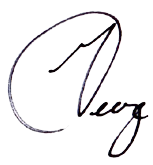For Everything – There is a Season – And a Concert
Nature generally has always inspired artists and authors from landscapes to fairy tales. The cycle of nature’s seasons, however, possesses an even deeper fascination for creative minds. It represents the passage of time, the inevitability of the future, and the progress of life itself on a grander scale than the picayune ticking of seconds, minutes, and hours that narrow our perspective. Philosophers, poets, composers, and theologians often view the seasons as an organic, less predictable, and more fulfilling way of moving toward future. And whether we associate it with the beginning of a sports season, time for vacation, or the sheer joy of smelling freshly cut grass, everyone has a favorite season. And, it is with this in mind that the Peoria Symphony Orchestra offers an excellent program on March 15 that explores the seasons and the cycles of life.
Three pieces grace this program. Handel’s concerto grosso in C Major, Dello Joio’s Pulitzer Prize-winning “Meditations on Ecclesiastes,” and Vivaldi’s famous “Four Seasons.”
The first work is celebratory and upbeat, a harbinger in a way. It is a musical interlude from Handel’s first oratorio entitled “Alexander’s Feast.” The oratorio was the beginning of his compositional Spring. Handel became famous in London for his Italian operas such as “Julius Caesar.” But, as with the seasons, fashion changed. Italian opera became passé and the baroque composer had to find a way to maintain his popularity – and his finances. So he set about in 1736 to present his first oratorio to London audiences. The premiere of “Alexander’s Feast” at Covent Garden was so successful, it inspired him to continue composing oratorio. Ironically, this seasonal change in Handel’s creativity also ensured his legacy. We still enjoy his oratorios “Saul,” “Solomon,” “Israel in Egypt,” and, of course, “The Messiah.” The concerto grosso is flowing and beautiful with great interplay between the three solo instruments and the orchestra.
Norman Dello Joio’s “Meditation’s on Ecclesiastes” is a musical contemplation of the famous opening of Book Three of Ecclesiastes from the Bible. It begins “To everything there is a season and a time to every purpose under the heaven. A time to be born, a time to die…” In this work Dello Joio provides music that reflects the meaning of these biblical passages and the seasons of life. He depicts them, much as Vivaldi does, by using rhythm and beautiful melodic and harmonic language to evoke both the inner emotional content and the outward image of each “season.” At its premiere in 1956, it was presented as a ballet commissioned by the Juilliard School for the Jose Limon Company. The ballet was entitled “There is a time.” I have had the honor to conduct this work as a ballet with its original choreography at Juilliard. The visual enhancement of the music certainly makes an impact on the listener, but the music stands for itself, as evidenced by its winning of the Pultizer Prize in 1957.
Vivaldi’s famous “Four Seasons” is probably the best-known work of baroque music. Taken for granted now as the music in commercials, films, and dozens of recordings, they actually saved Vivaldi from historic obscurity when rediscovered in the early Twentieth Century. Originally performed by “The Red Priest and his all-girl orchestra,” it sounds today like a Vegas club act. But there really was a Red Priest (Antonio Vivaldi) who conducted an all-girl orchestra. He was the conductor at the Pio Ospedale della Pietà, a Venetian institution for orphaned and homeless girls that offered comprehensive musical training – perhaps Italy’s version of Il Sistema.
Vivaldi published several sets of concerti, usually twelve per set, and these compositions were very influential throughout Europe. They had titles such as L’estro armonico (“Harmonic Inspiration”) and La stravaganza. J. S. Bach transcribed some of these concerti for keyboard and their formal experimentations influenced his own compositional evolution. Some musicologists say that L’estro armonico changed the course of Western music, by raising instrumental music to equality with vocal music.
In 1723, Vivaldi published another set of concerti. Entitled Il cimento dell’armonia e dell’inventione (“The Contest between Harmony and Invention”) it is the first four of this set, each describing a season, which we now know as “The Four Seasons.” Each concerto has a sonnet (probably by Vivaldi) describing that season’s qualities. In the score, passages from the sonnets appear next to the musical invention meant to express them – a barking dog, birds in joyous song, young zephyrs, and pastoral bagpipes – to name just some. As you listen to these wonderful examples of Italian Baroque expressionism, you will be able to see the sonnets. You might feel as though you are on a musical picnic in the Tuscan countryside or skating on frozen Lago di Como in Lombardy, Italy.
I have a special affinity for these pieces. I played Winter with my high school orchestra, and I studied all of them with numerous teachers, including our soloist, the world-renowned violinist and pedagogue Paul Kantor. He is a consummate artist who inspires audiences with his music and future artists with his teaching and humanity. Paul is actually the teacher of another performer on this PSO season, our October soloist, violinist Charles Yang. Paul will be spending time in our community giving a masterclass the week he is here. His performing and teaching credits include Juilliard, NEC, Cleveland Inst, Aspen, and Rice Univ. and the Univ. of Toronto. Joining Paul in the Handel will be PSO Concertmaster Marcia Henry-Liebenow and PSO Principal Cellist Adriana La Rosa Ransom.
One special twist to this concert will be that movements of the Dello Joio will be performed between each of Vivaldi’s concerti. So, you will be able to span some two hundred years of seasons instantly, enjoying the perspective of two beautiful interpretations of time and life – in an instant.
Warmly,

George Stelluto, Music Director of the Peoria Symphony Orchestra










